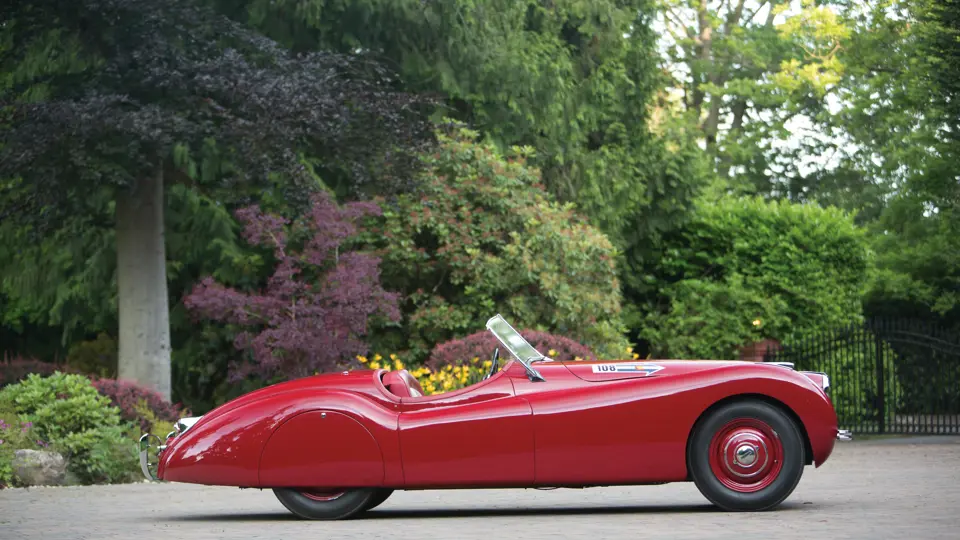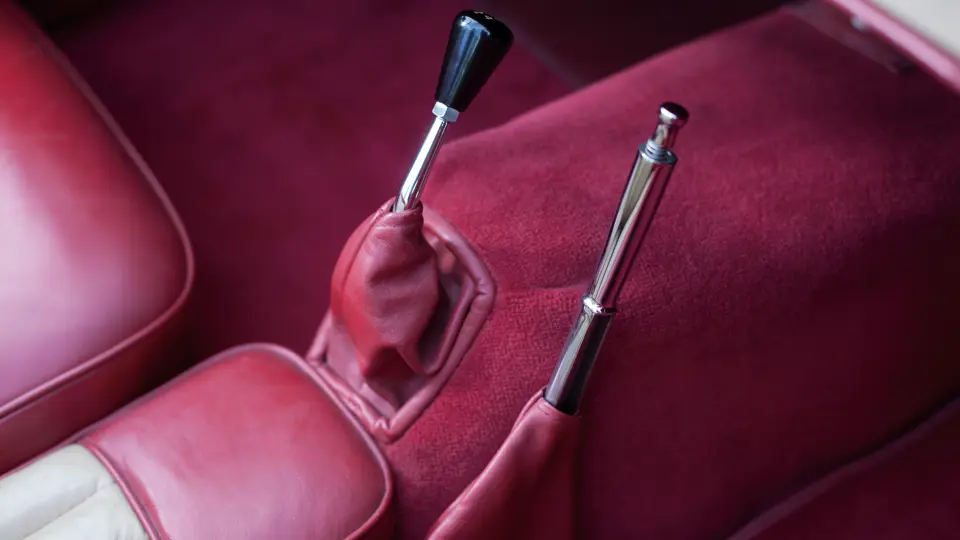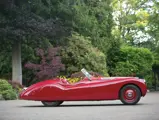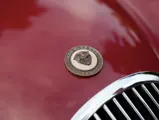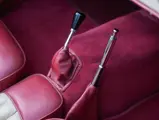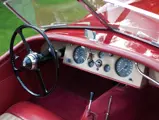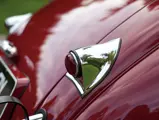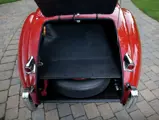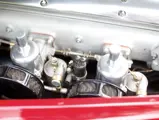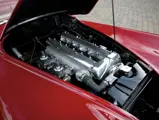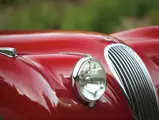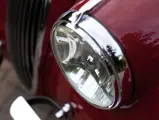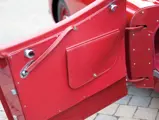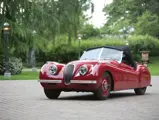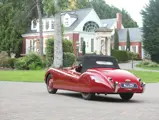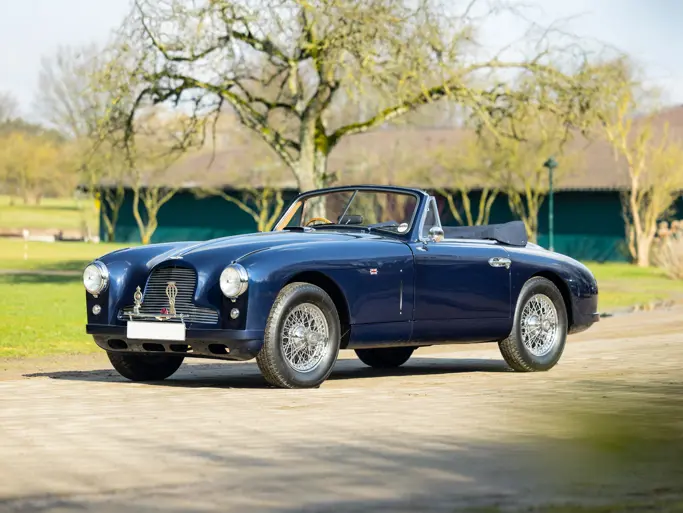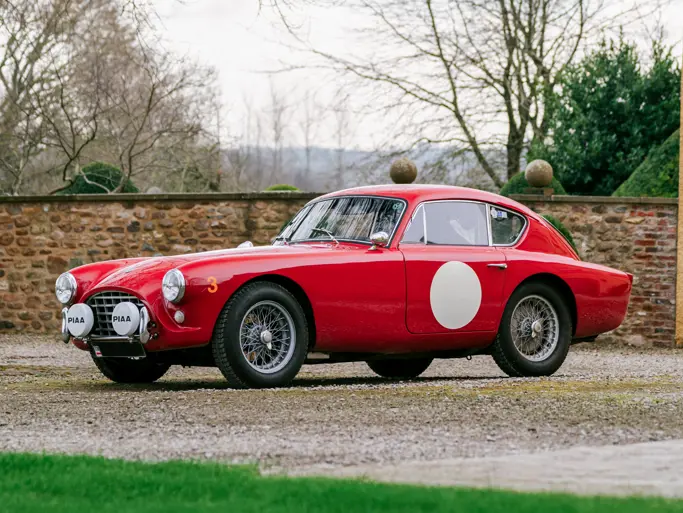160 hp, 3442 cc DOHC inline six-cylinder engine, twin SU H6 carburetors, four-speed manual transmission, independent front and live axle with semi-elliptical spring rear suspension, and four-wheel drum brakes. Wheelbase: 102"
• One of 148 left-hand drive alloy roadsters
• Comprehensively restored and well maintained since
• Original delivered colors, as per Jaguar Heritage certificate
• Vintage rally veteran
While most contemporary observers of the Jaguar XK120 would be certain that it was born for greatness, it is surprising to consider that it was conceived and born as a limited-edition stopgap model. William Lyons assumed that the post-WWII fortune of his company, the recently re-named ‘Jaguar Cars, Ltd.’ would be made on the saloon cars that would sell so well in export markets, especially the U.S. To that end, a new dual-overhead cam six-cylinder, 160 hp engine was developed to power a new sports luxury four-door. As the new car was not yet ready, it was decided to launch the engine in a limited run of alloy-bodied roadsters. When shown at the 1948 Earl’s Court Motor Show, it created a sensation. Following a speed run on a Belgian highway in 1949, in which an XK120 ran 126 mph with its windshield on, and 132 mph without, there was no doubt that this would become a regular production model. After 240 alloy cars were built, production was shifted to more easily managed steel, now more widely available following postwar material shortages.
Offered here is an early example of the 184 left-hand drive alloy cars built, chassis number 59. The Jaguar Daimler Heritage Trust certificate, issued in June 2012, records that this open two-seater left-hand drive car was completed on December 16, 1949 and shipped to the Canadian distributor, James L. Cooke Motors in Toronto, Canada. The original dealer is not recorded, but it is likely to have been Cooke Motors, and the “date of dispatch” is shown to have been January 1950. Then, as now, it was finished in Red, with a Biscuit and Red leather interior and black soft top.
The Jaguar is equipped with the characteristic and evocative pressed steel wheels and rear wheel spats, which give a dramatic shape and proper smooth, clean look. Very frequently, wire wheels are fitted in place of the pressed steel type, which necessitates the removal of the spats due to the wire wheel hubs.
This example has benefitted from a comprehensive restoration by RM Restoration in 1990. A dozen years on, the quality of that work and the diligent maintenance and attention since can still be seen in the excellent panel fit and even gaps, which are so difficult to achieve with this body. The rich red paint shows an even, smooth reflection of light, and the bright trim glows richly. Inside, the leather trim on the seats, doors, and dashboard show only the lightest traces of use, as do the correctly fitted carpets. Under the bonnet, the twin-cam XK engine and SU carburetors appear clean, well maintained, and freshened, with even enamel coating on the exhaust manifold and tidy wiring, hoses, and clamps.
Properly used, this XK has been a two-time veteran of the Colorado Grand rally, as evidenced by the stickers emblazoned on each side of the bonnet. These cars were built to run, and run fast—there are few more entertaining and capable vintage rally mounts as these early-120 roadsters. When properly set up and maintained, they handle securely, even on cross-ply tires. As can be imagined by the performance of the test car in Belgium back in 1949, modern highways hold no terror for a capable beast such as the Jaguar XK120.





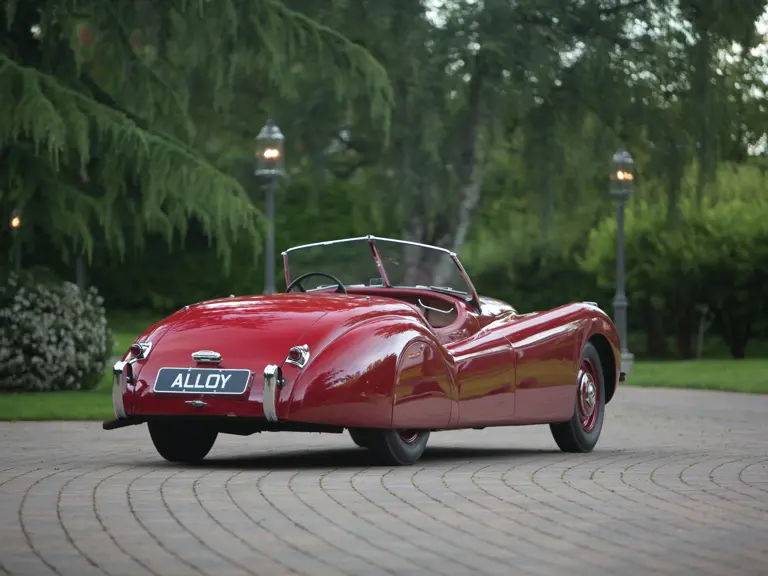
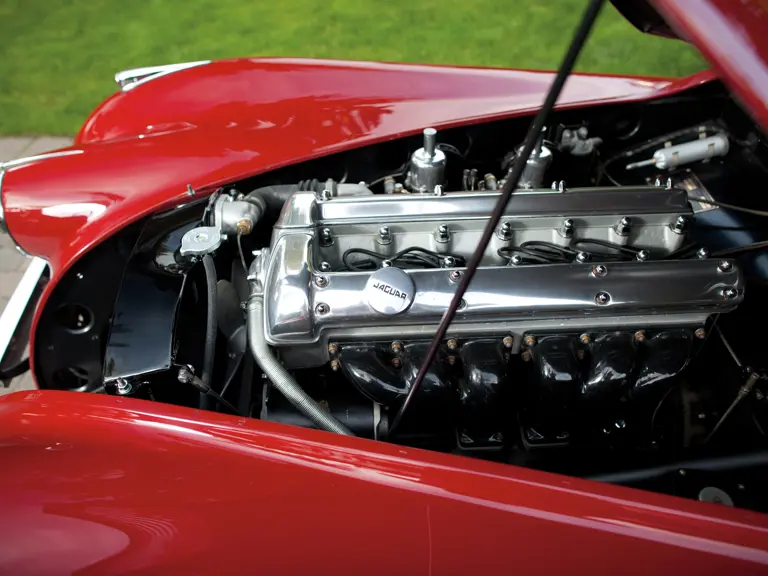
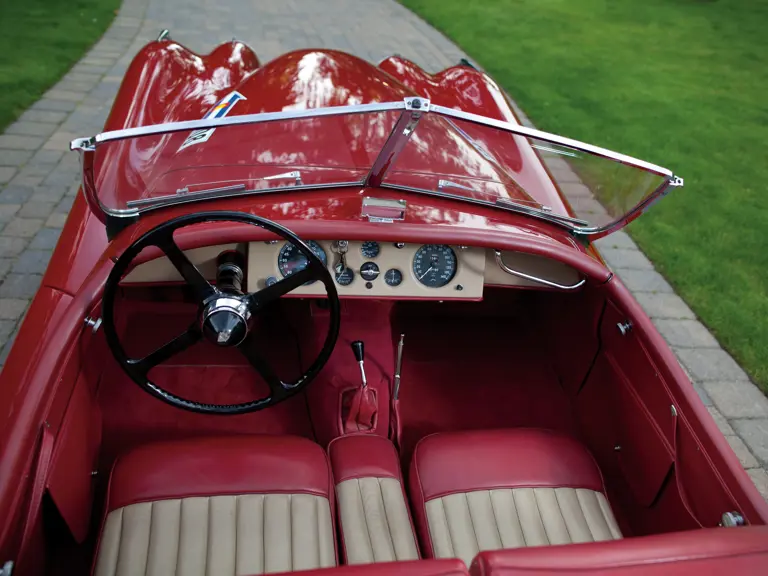

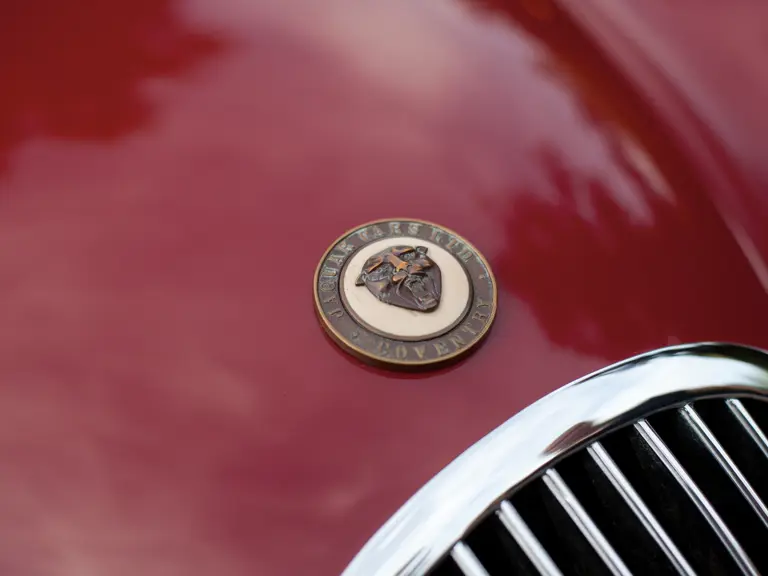
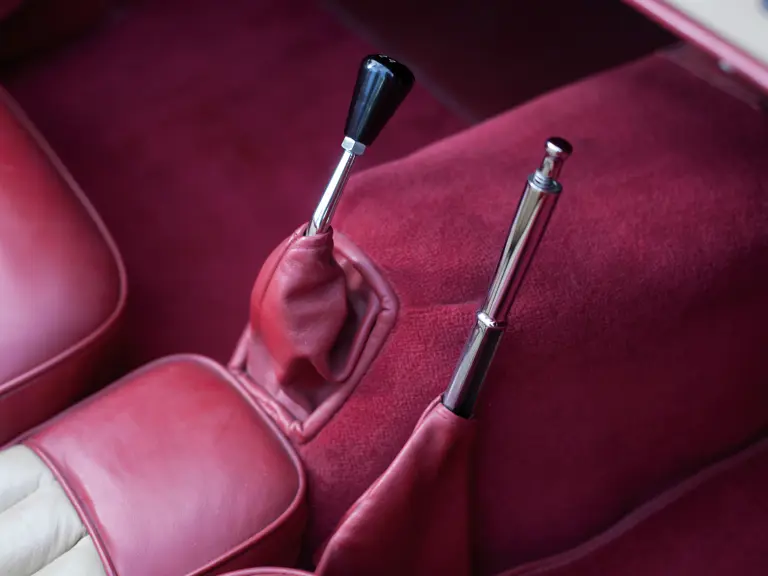

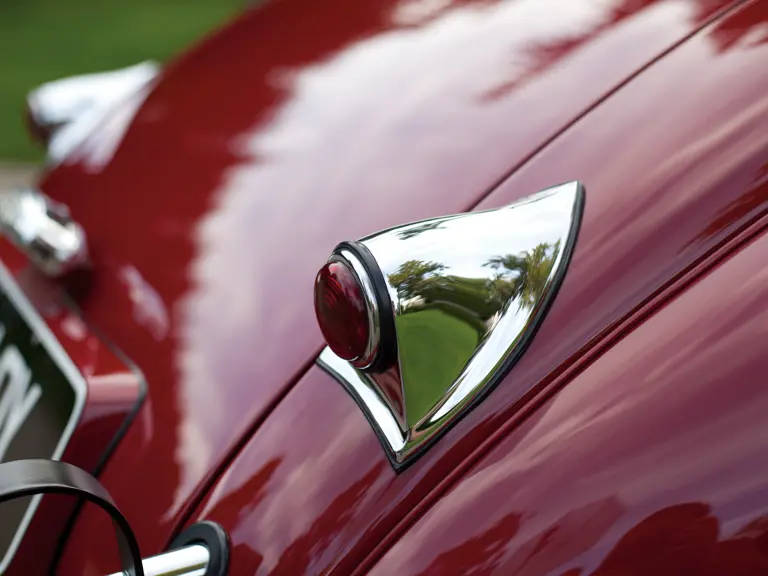
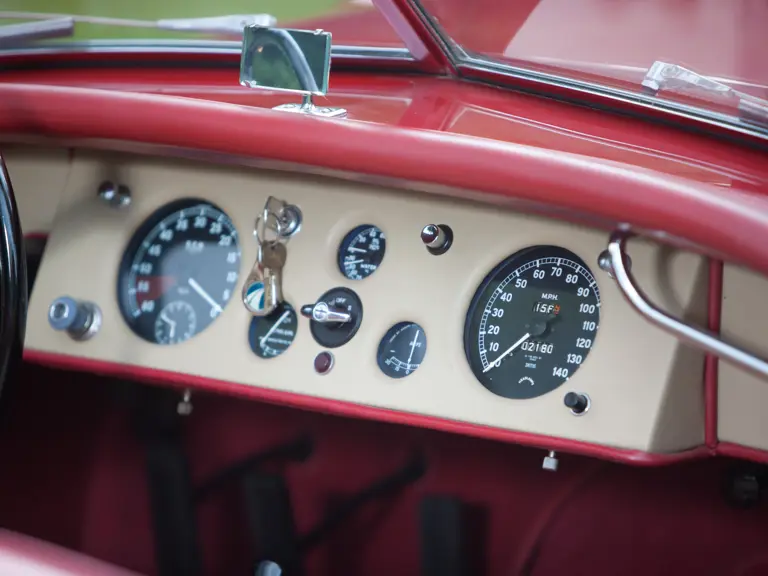
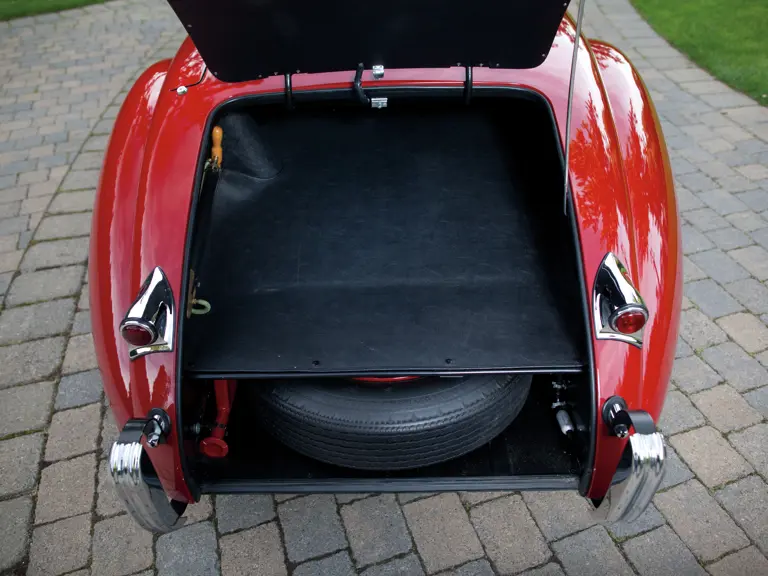
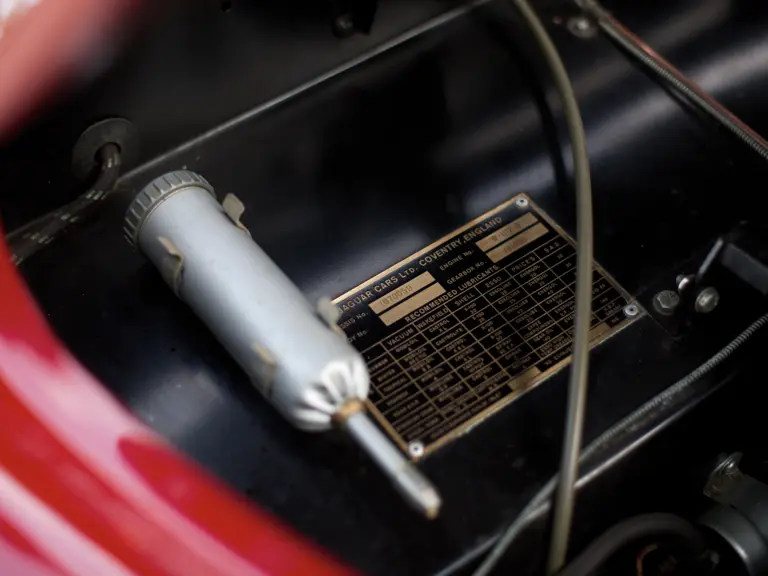
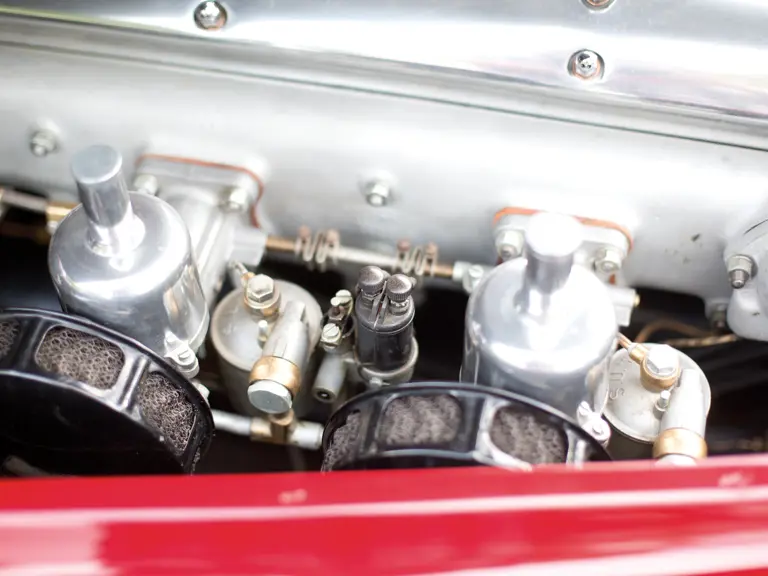
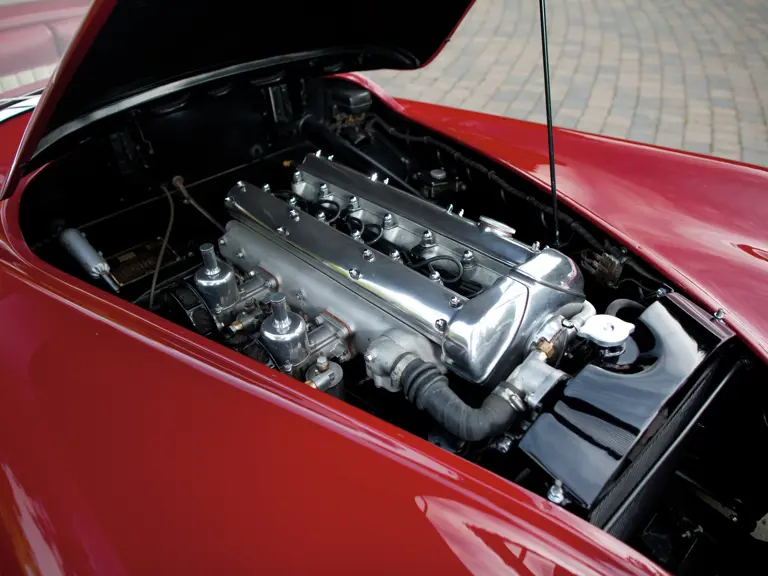

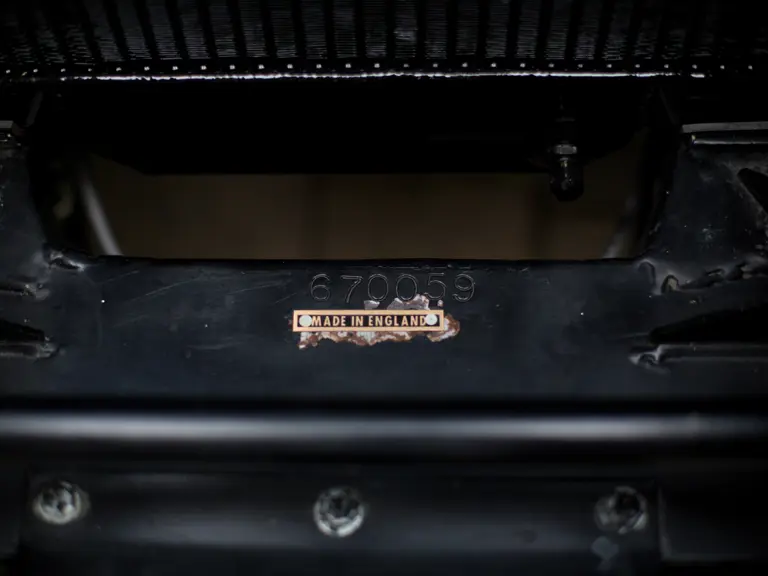
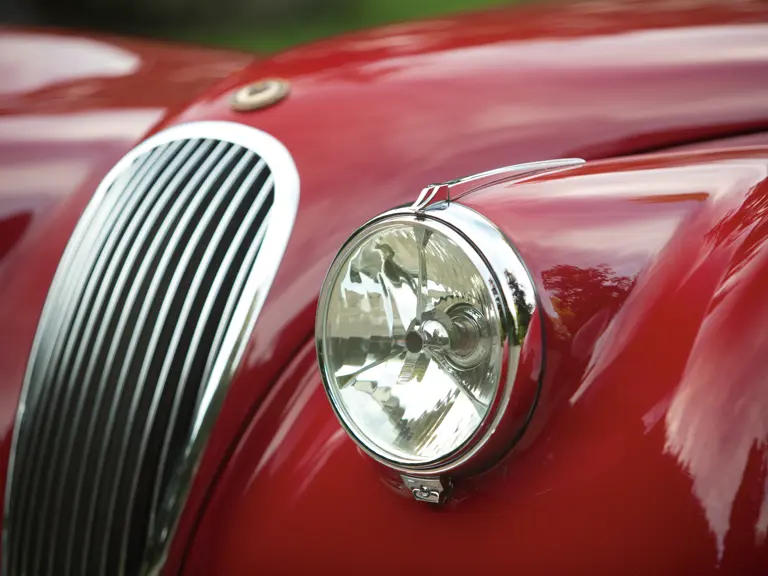
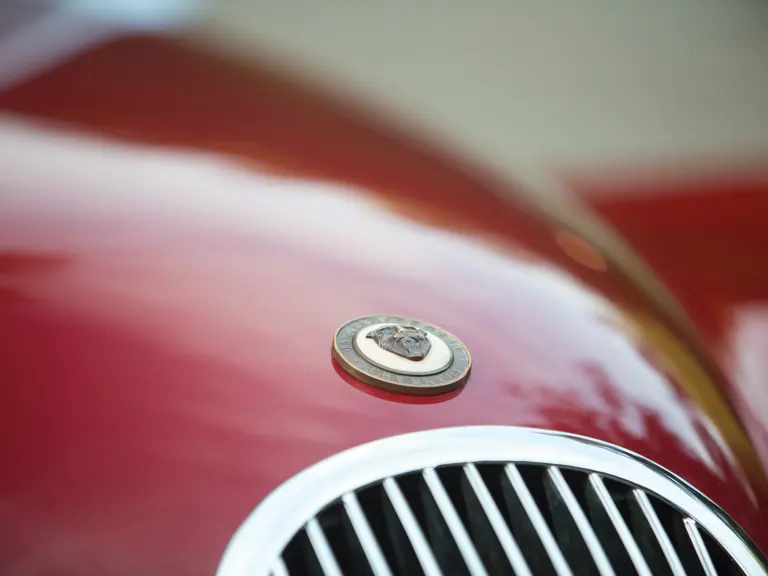
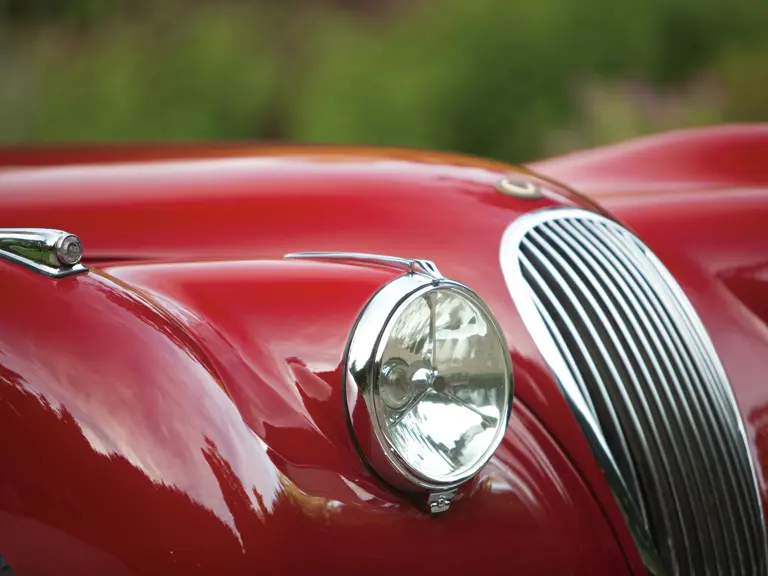
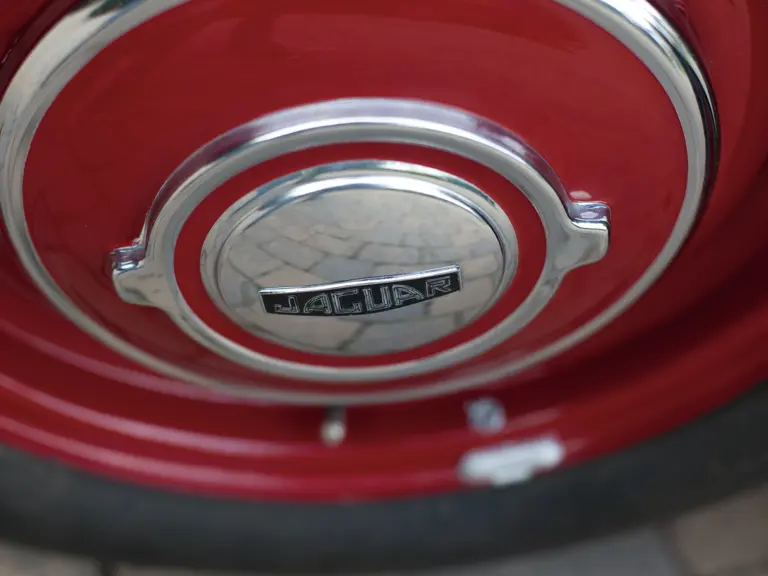
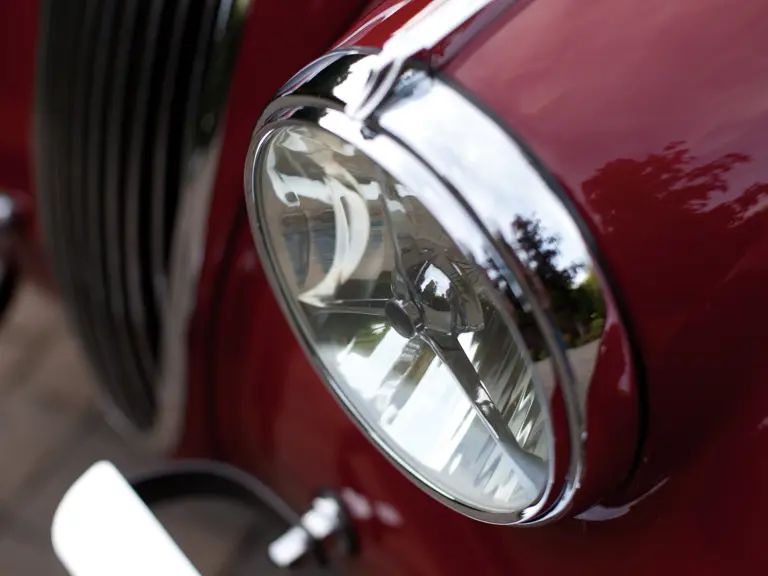
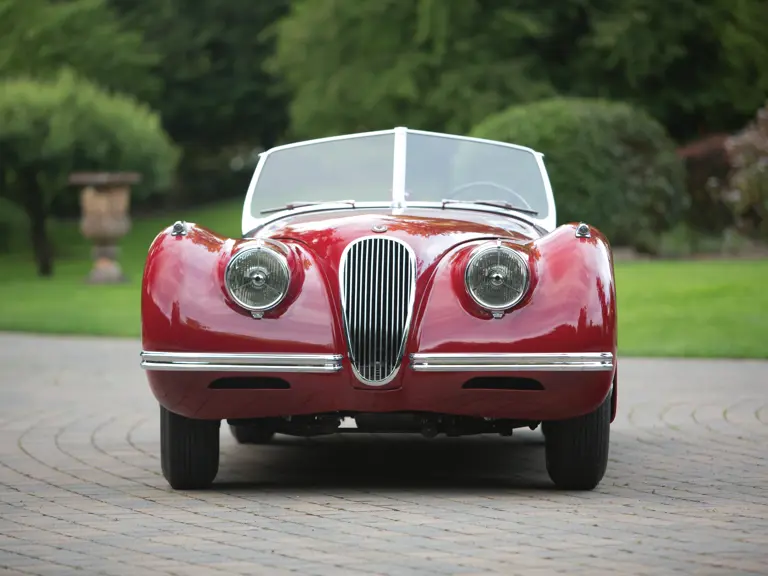
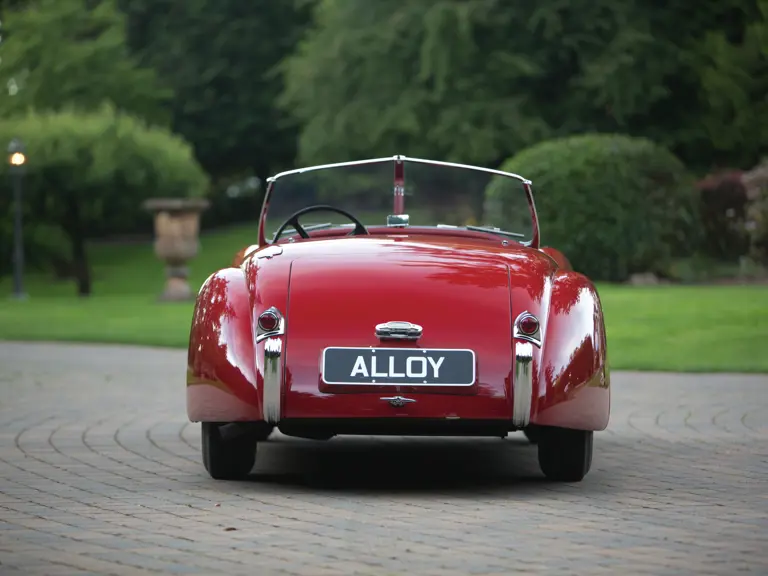

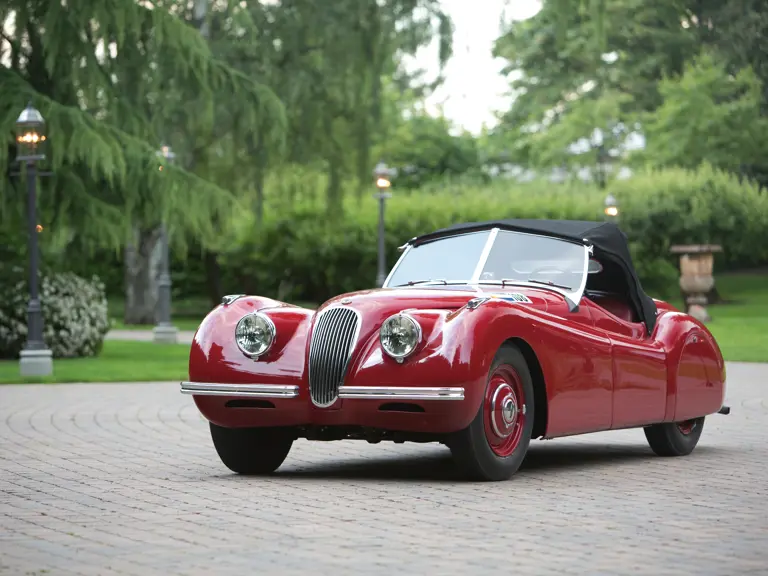

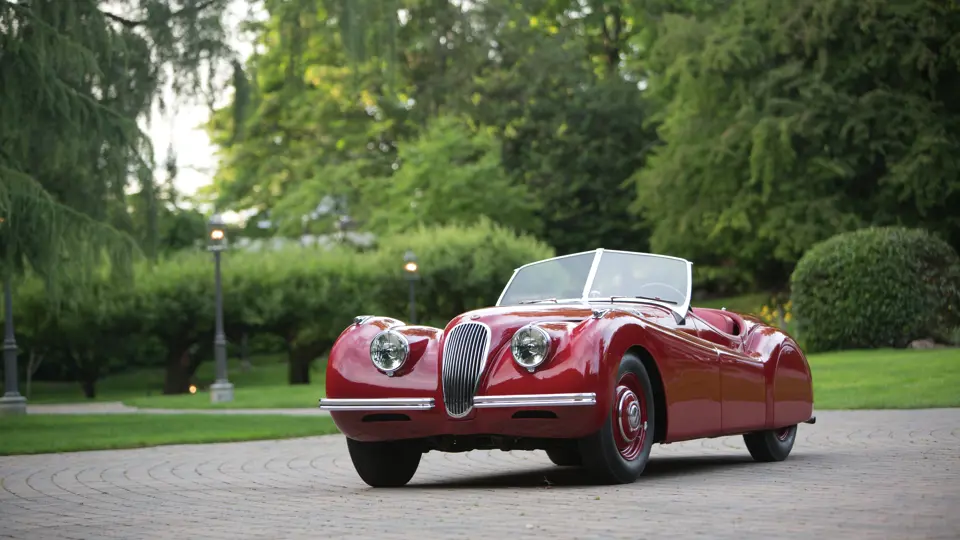
 | Monterey, California
| Monterey, California
